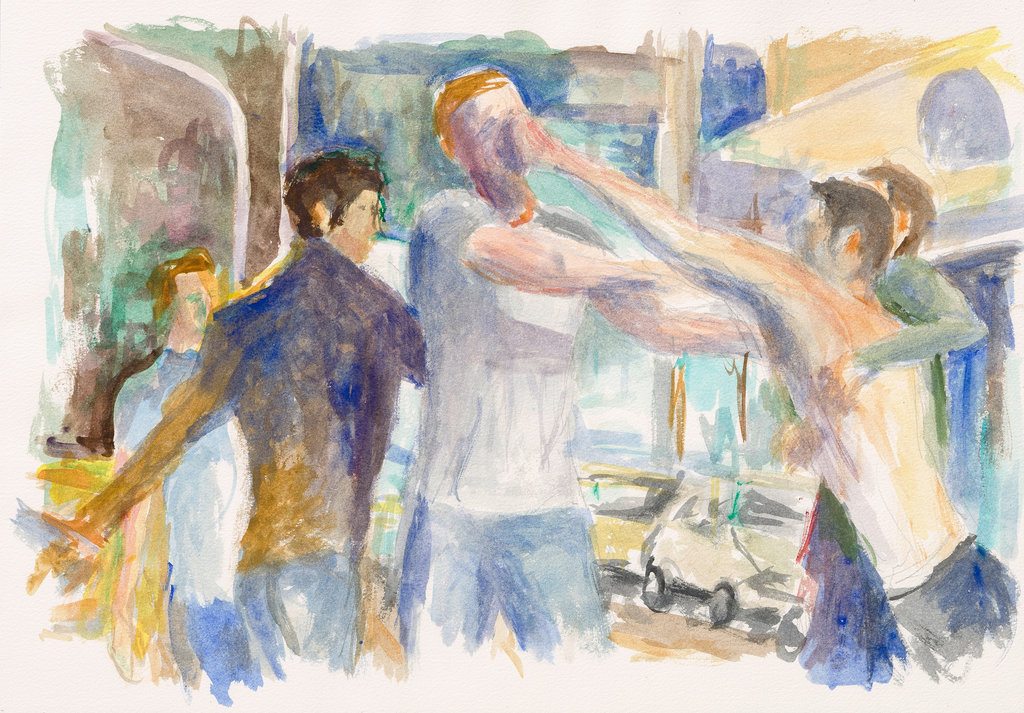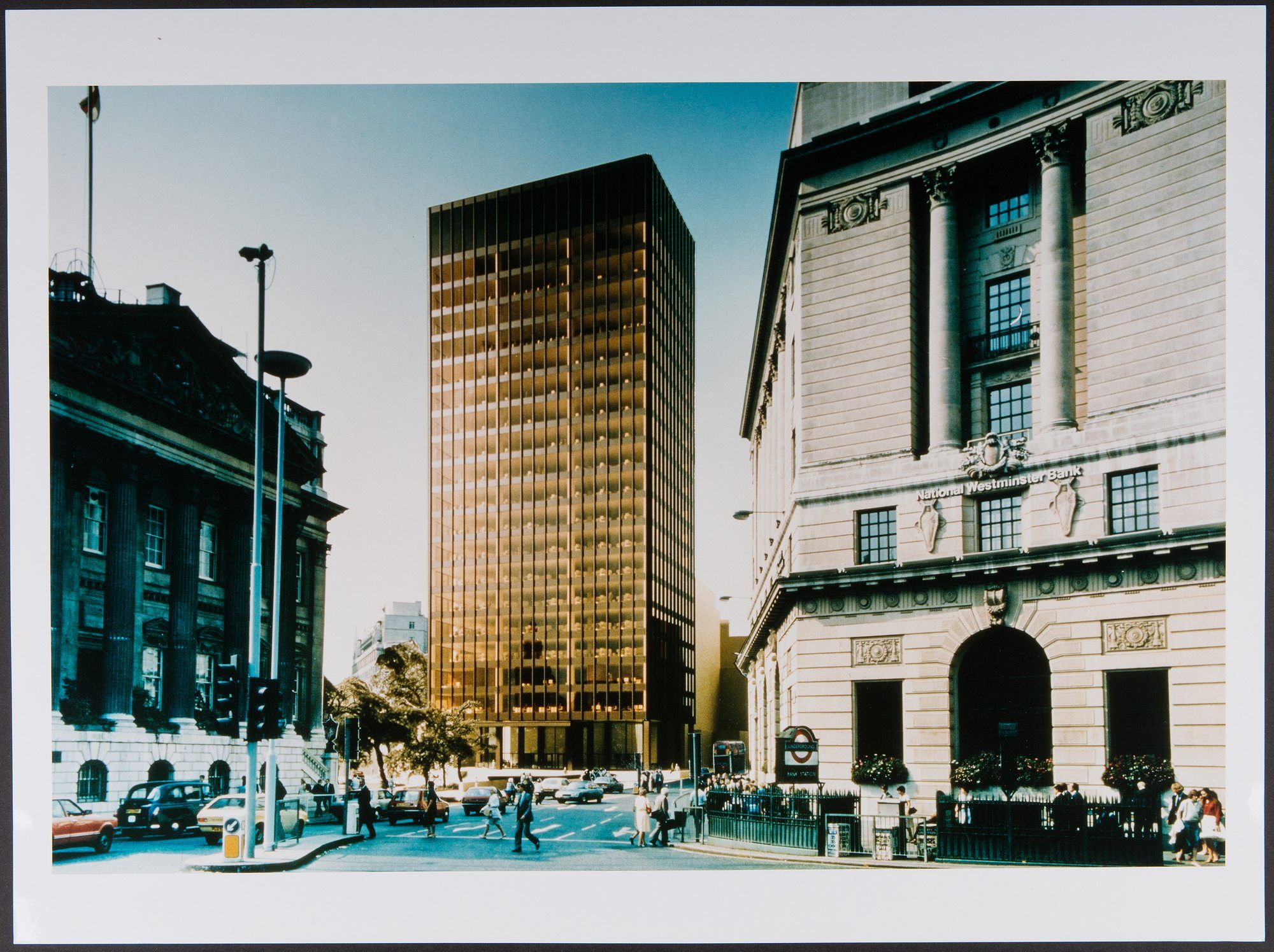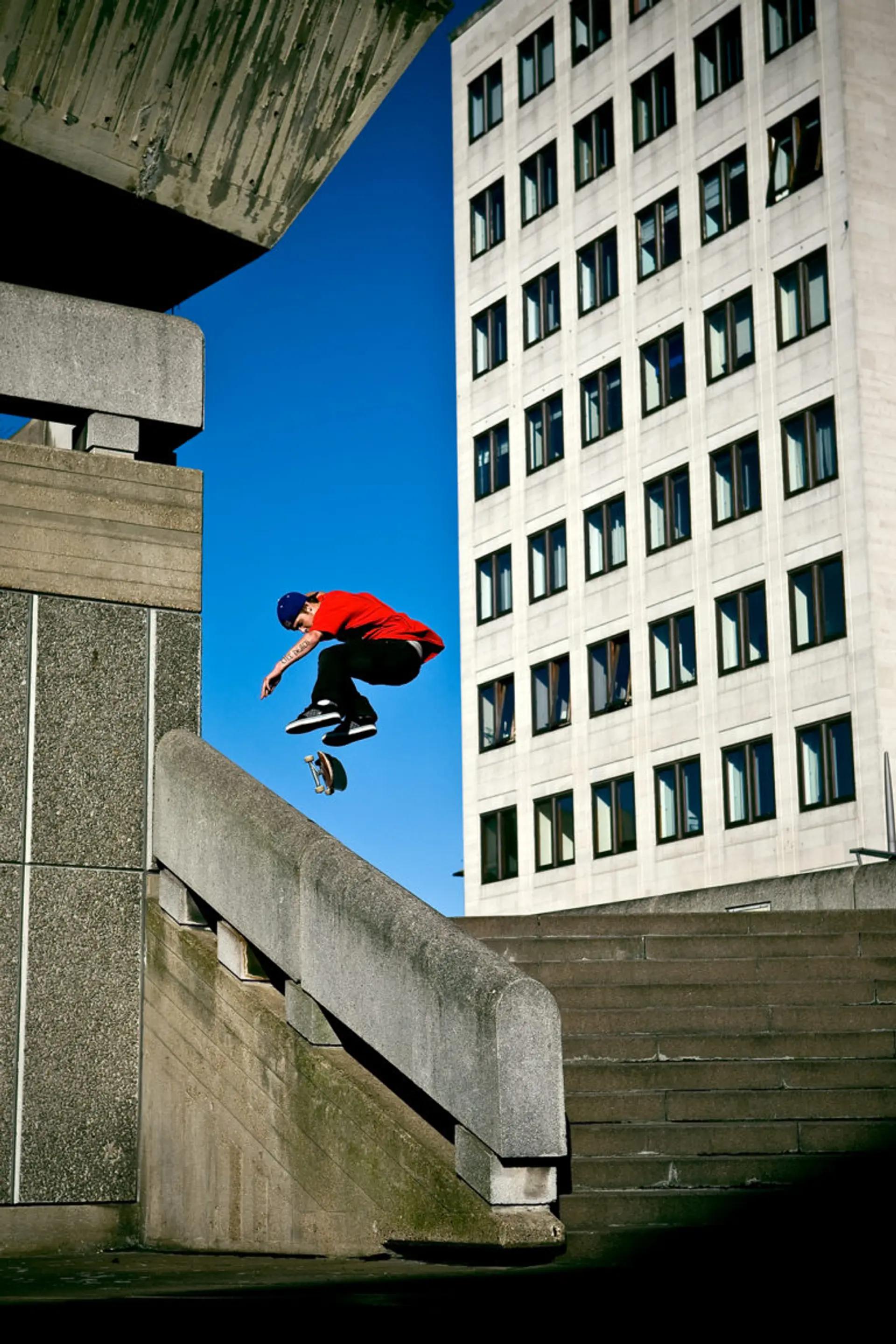Paranormal Dandies, Sex with Buildings: HERNAN BAS in Cambridge
|Yae-Jin Ha
“If you slip, you will still have three seconds to live,” says Whipplesnaith of The Night Climbers of Cambridge. Its air of bravado and temerity embodies the spirit of their elusive nocturnal pastime. During the 1930s, the society climbed buildings throughout Cambridge and took photographs of their activity.
Unlike the action-packed nature of parkour, these images reveal an angsty and sometimes erotic relationship to classical architecture. Bodies squeezed between limestone columns. Young men pressed against façades, gripping tightly against railings. We see them gravitating towards buildings with this sense of urgency—onto them, as opposed to inside them—interacting in an unprecedented and often unhuman manner.
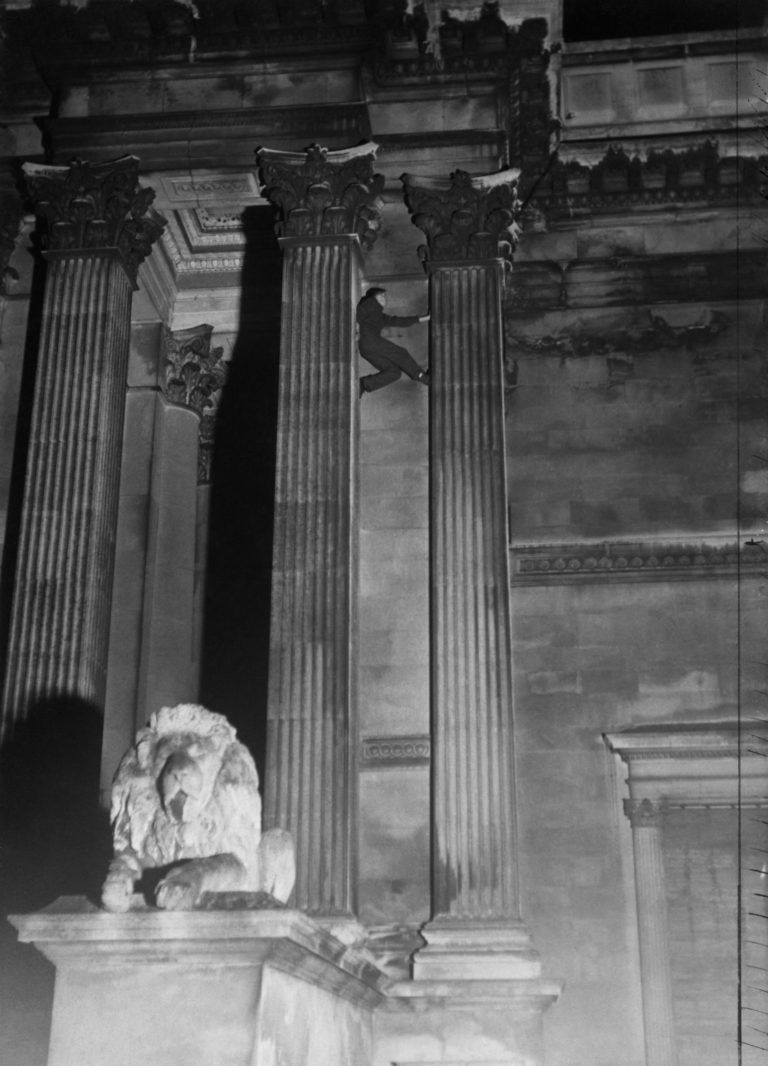
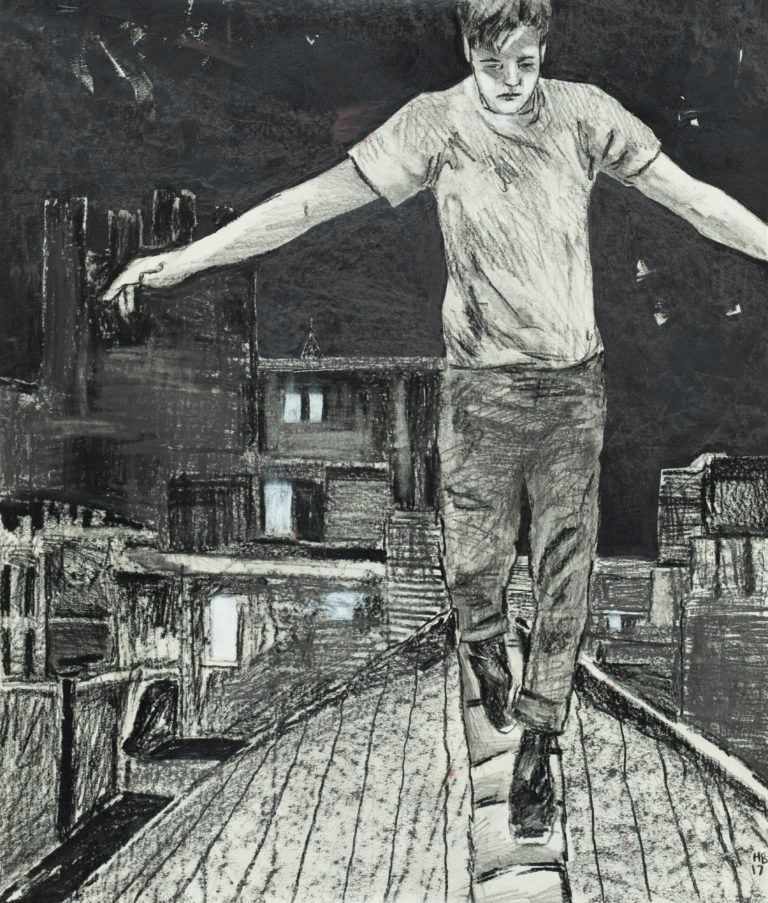
The lore of these rebels captured the attention of painter Hernan Bas, who has an instinctive draw towards unearthing myths. 032c’s Yae-Jin Ha spoke with the artist about his chance encounter with the Night Climbers legacy and why he thinks dandyism and paranormal activity are not that different.
Yae-Jin Ha: Your latest series “Cambridge Living” was inspired by your residency at Jesus College Cambridge. Tell me about your time there.
Hernan Bas: In the course of my time there in the fall of 2016, I wandered the streets of Cambridge, handled plant specimens at the Cambridge Herbarium collected by Charles Darwin on his voyage on the Beagle, led myself on a haunted Cambridge tour, convinced myself my room was not indeed haunted. I also met incredible scholars and writers, sat in awe as a guest of the High Table, toured the wetland Fens, sat in on an Evening Song at a church older than any found in the U.S., and fell in love with illuminated manuscripts at the Fitzwilliam Museum.
I’m imagining it was during one of these adventures that you came across the legacy of the Night Climbers of Cambridge. What attracted you to them?
Early on in my residency, I did the requisite punting boat tour on the River Cam. It was on that punting cruise lasting all of 20 minutes that I learned of the escapades of the Night Climbers of Cambridge from the student “punter” tour guide. The idea of these midnight adventures, solo or in groups, seemingly for the sole purpose of mischief immediately led me to scour every bookstore in town for any materials I could find.
What fascinated me about the original photos of the Night Climbers of Cambridge was this emergence of peculiar relationship between the boys and the architectures. We see them activating the buildings through body contact, and vice versa. What was your reaction to the nature of their relationship?
When I first began researching the Night Climbers, I was reminded of a very early series of work I made around 2001, 2002 based on the “Hardy Boys” teen mystery book series—nocturnal adventures were also key to the mystery-solving duo’s activities. But aside from this, it was the photographs you describe themselves that amazed me. They had such a surprisingly clear aesthetic—it was as if these ragtag photographers had not just pointed a camera blindly into the dark, as they did, I believe, but they actually knew what would astound the audience of these-then secret images. A good deal can be argued in today’s vocabulary that this was some sort of performance work. I reject that. I see these images for what they were—a willingness to surrender one’s self to the dangers of gravity and to rebel in some abstract way to the privileged environs of life at Cambridge.
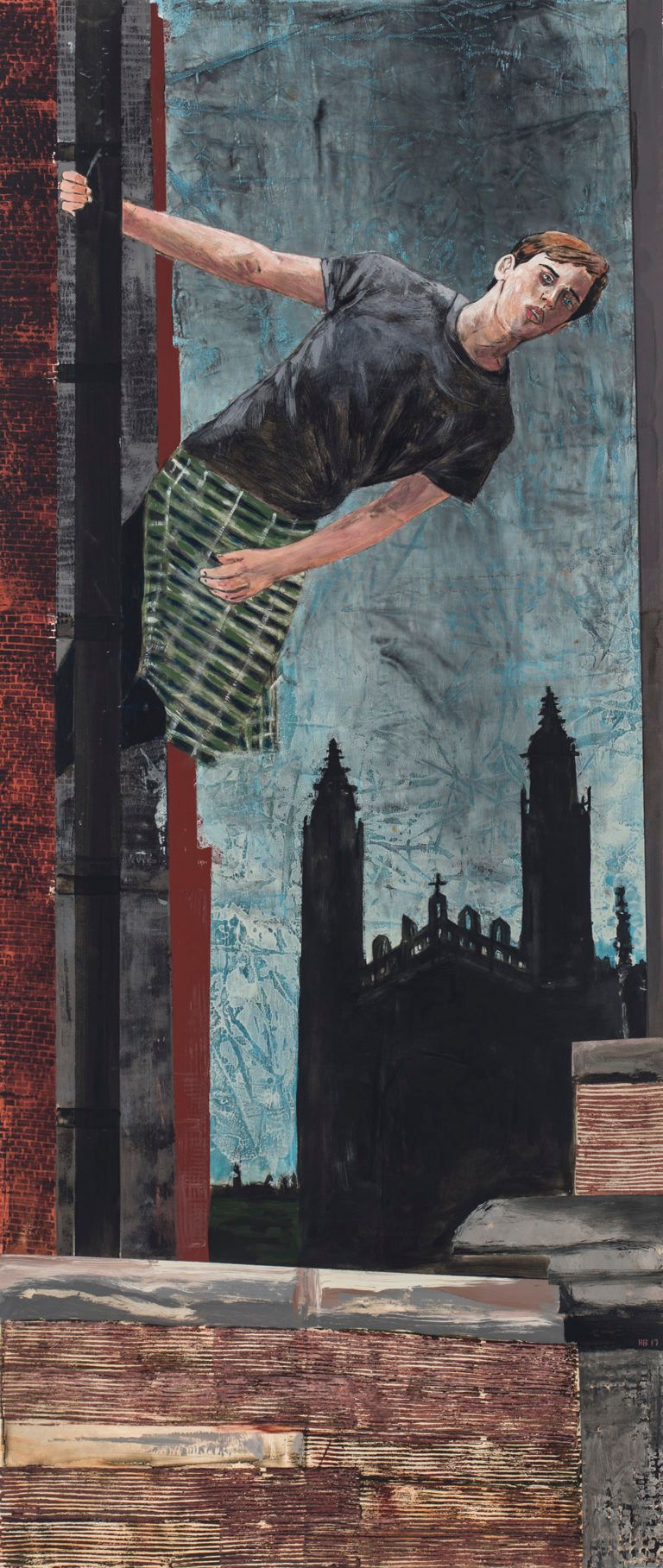
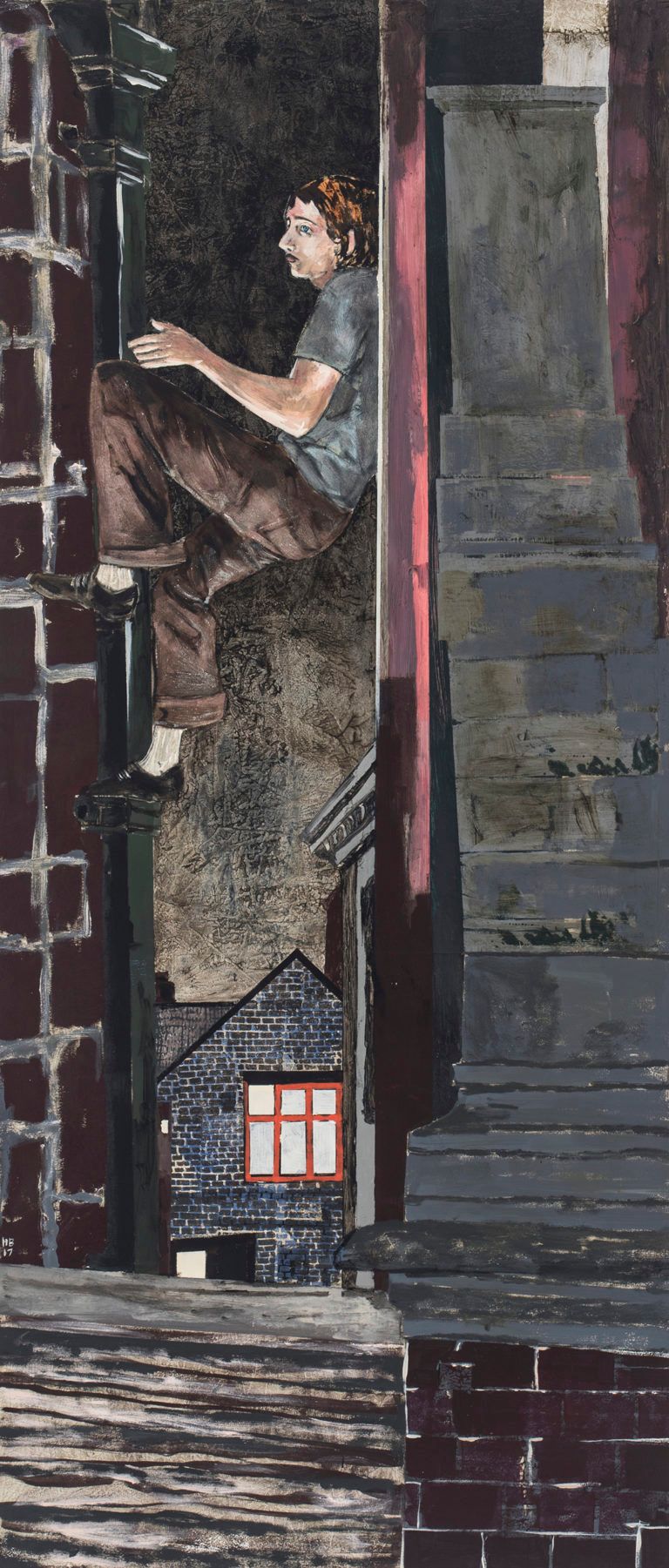
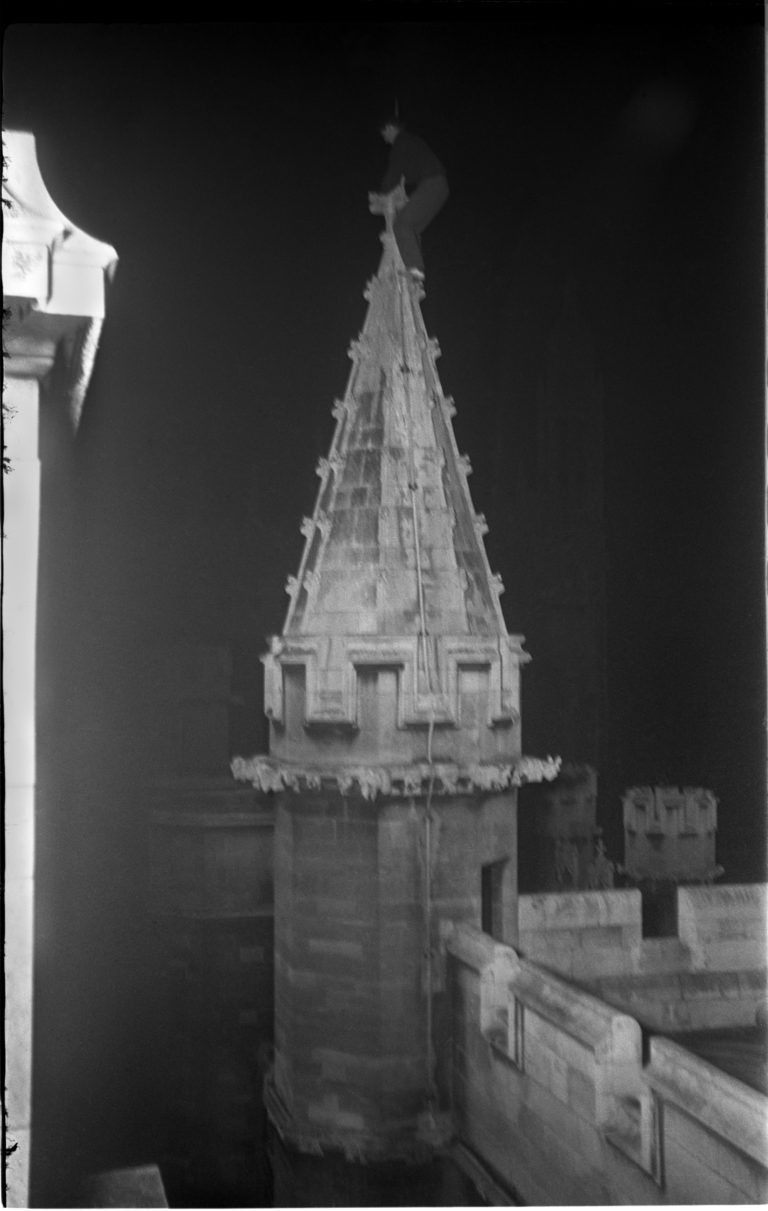
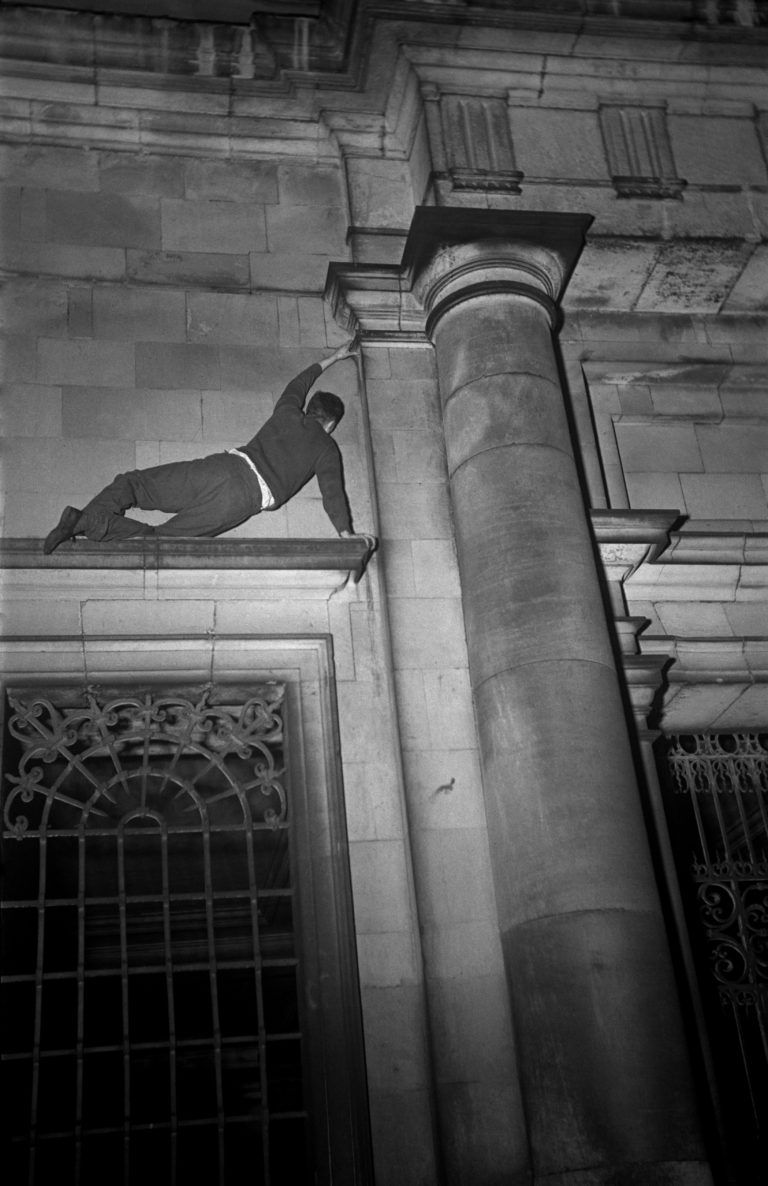
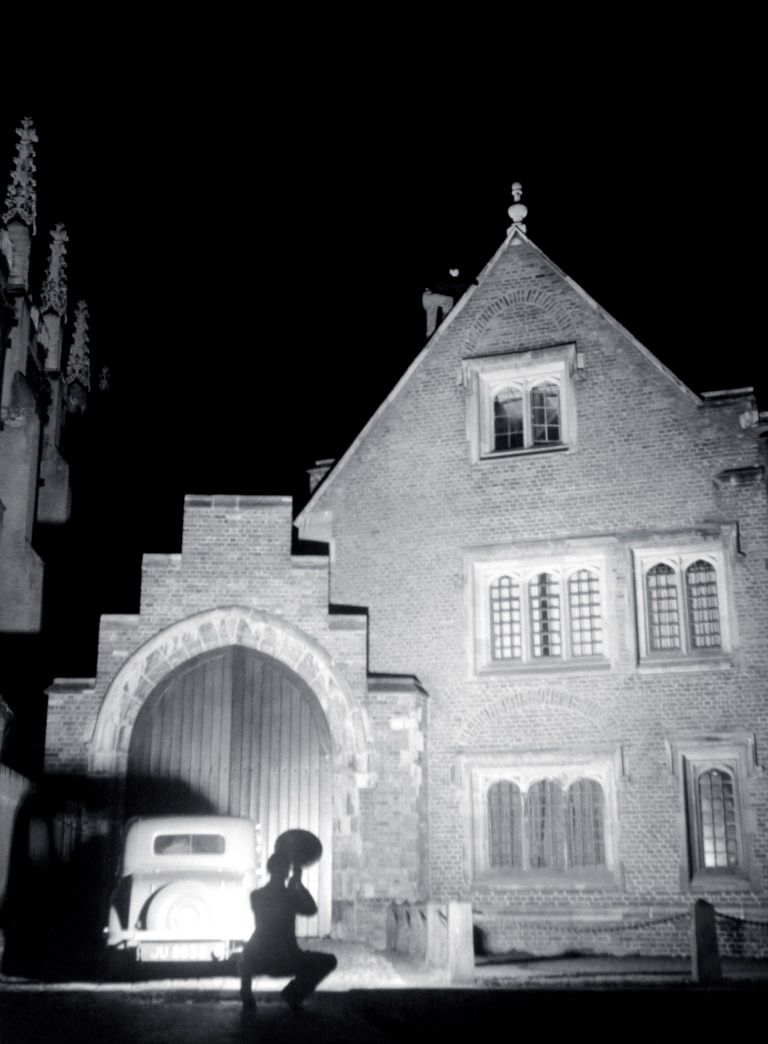
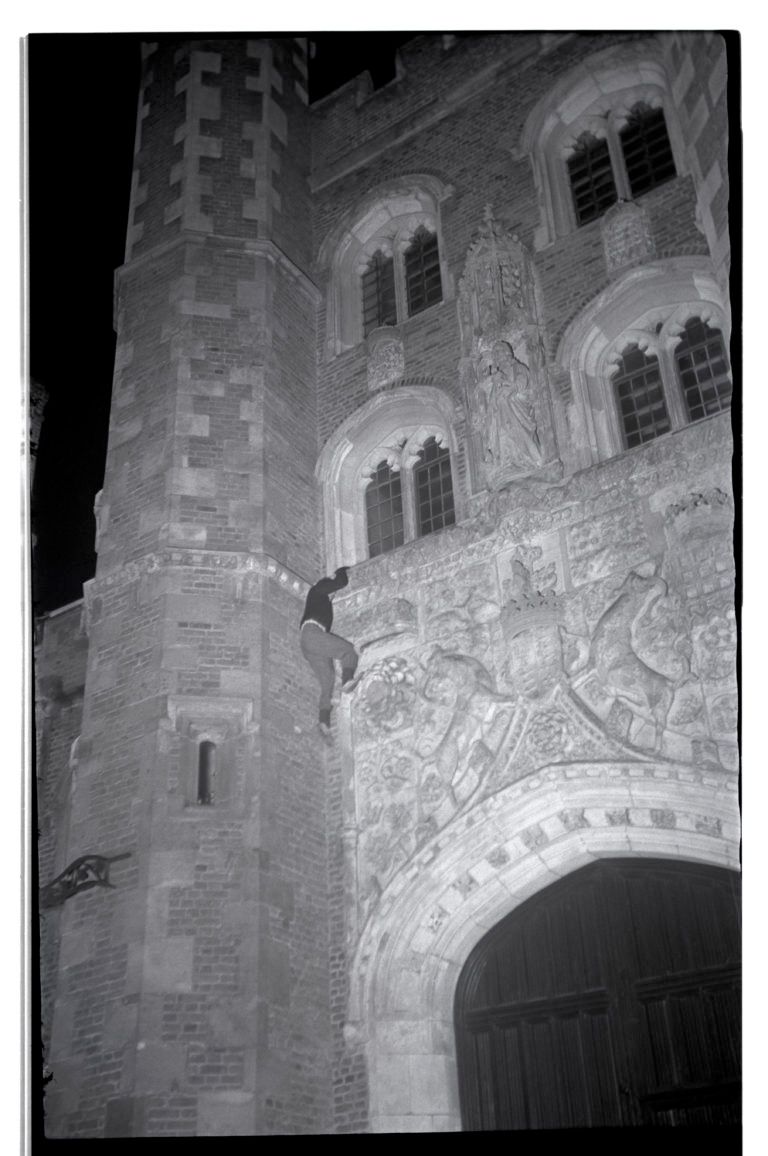
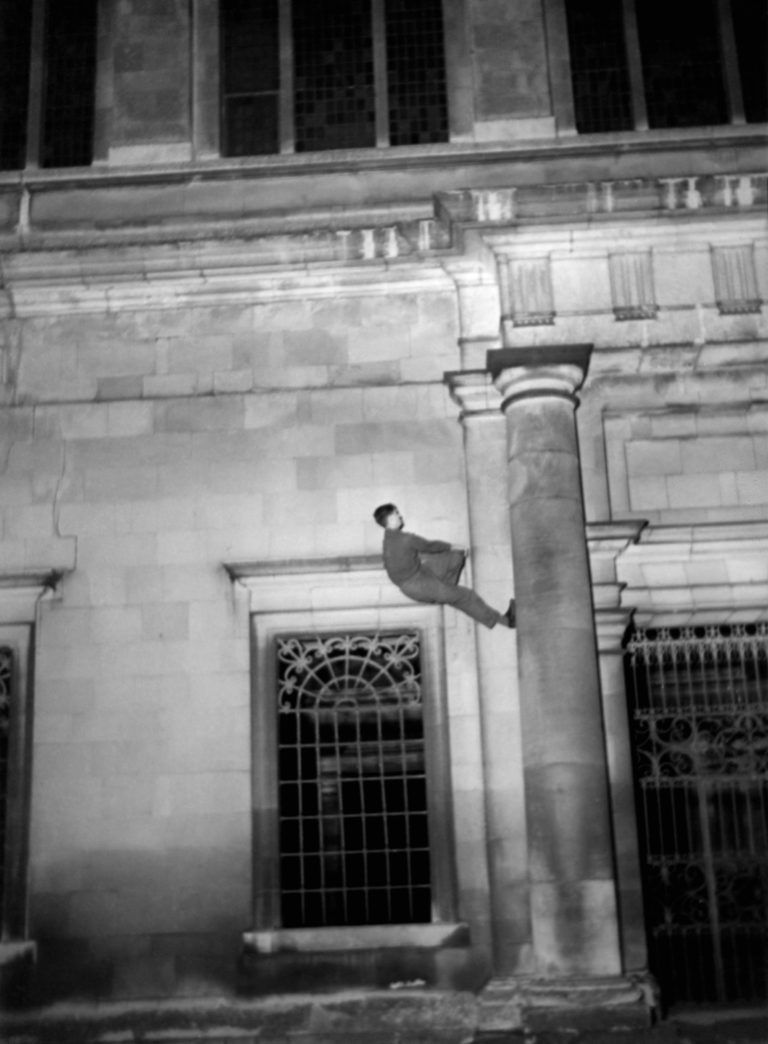
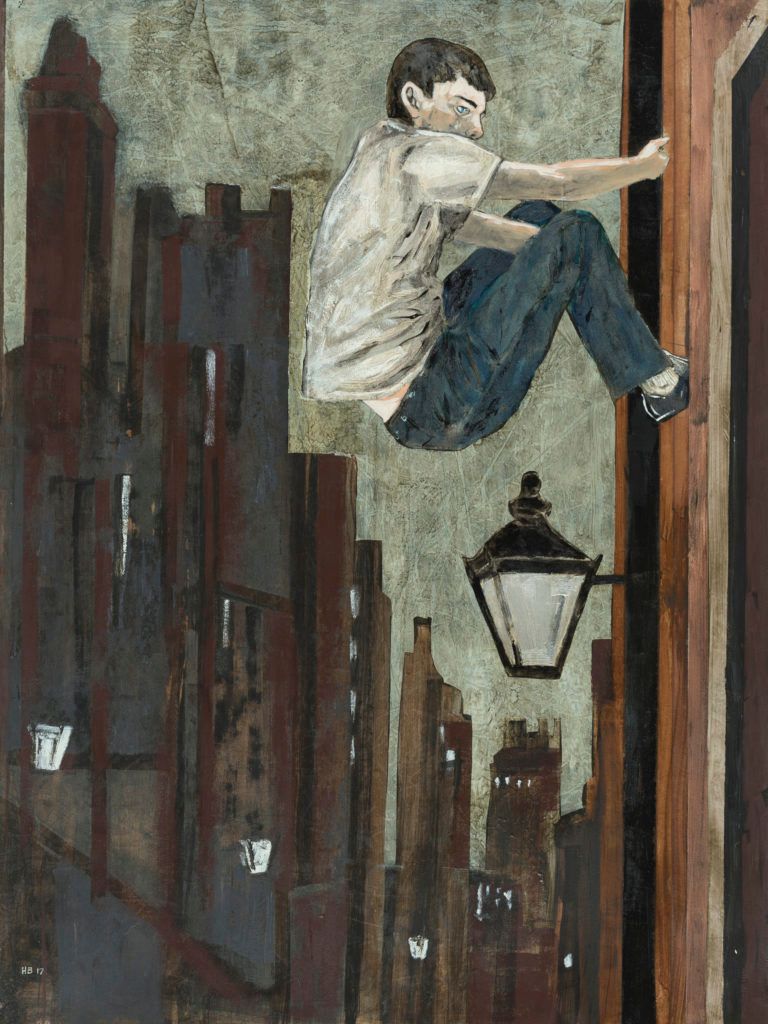
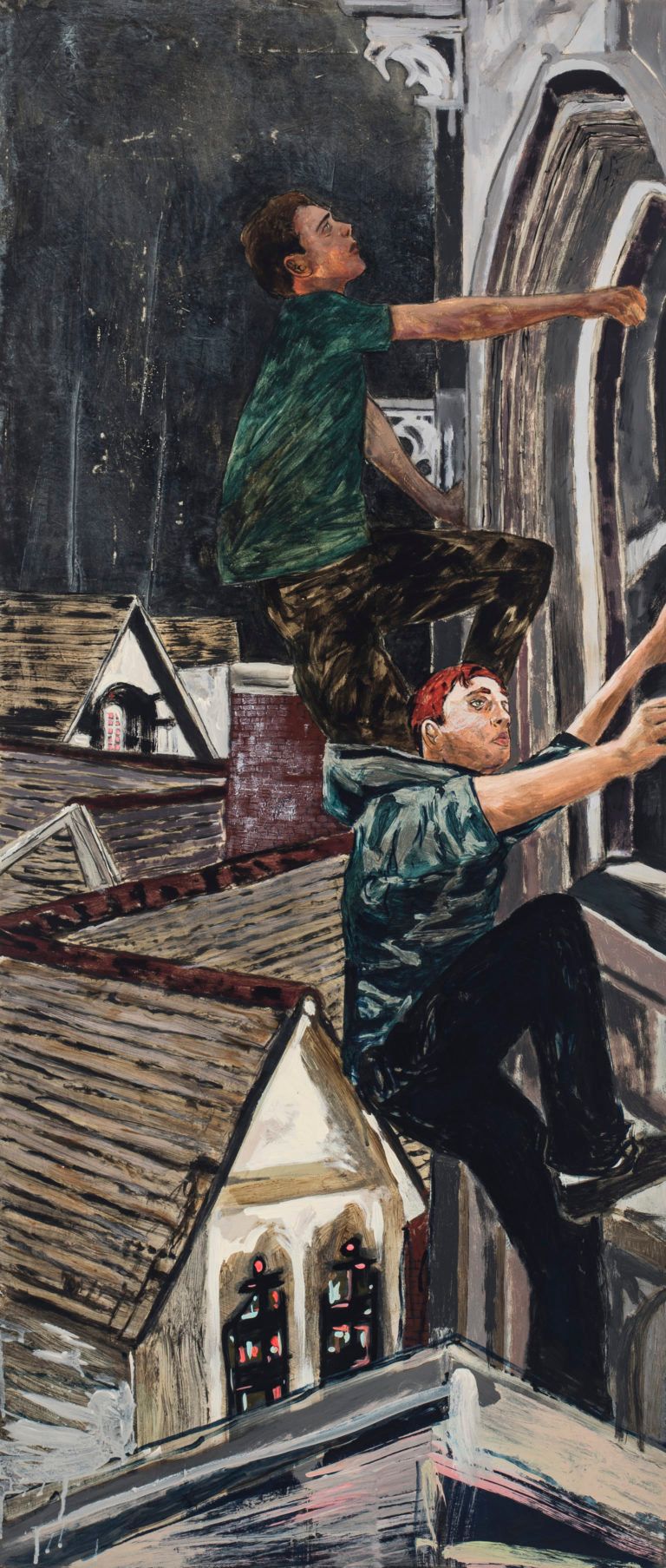
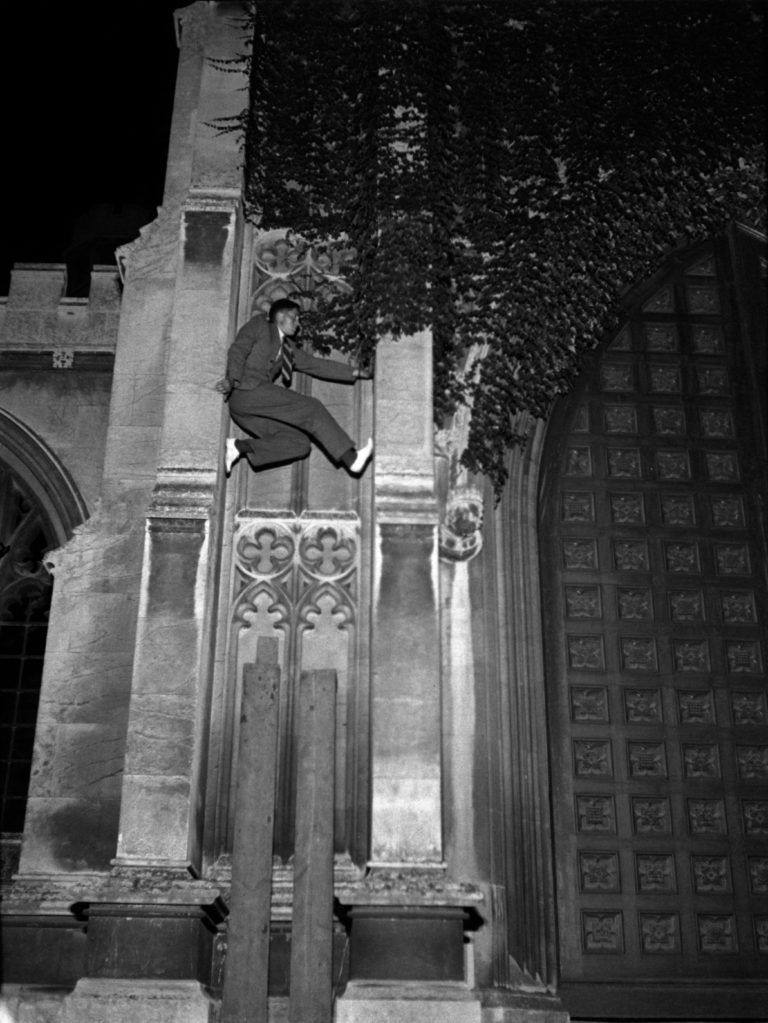
There is a phenomenon called objectum sexuality that refers to people who display romantic desire for inanimate objects. Erika Eiffel, woman who married the Eiffel Tower, is the most well-known example. As I was studying these photographs, I couldn’t help but to draw the connection. Did this idea of a sexual relationship with buildings play any roles in your thinking here?
I was definitely not thinking about that when I started drawing my own versions of the Night Climbers but objectum sexuality is now on my research list! I know that it’s a territory that can be ripe for sexy interpretation. After all, it’s men climbing towers … But sometimes it is just about acknowledging a great tale not heard by many that sparks my interest. As with the other lore and traditions that I delve into within “Cambridge Living,” I came to Cambridge and walked away with a body of work that describes an experience that I believe is foreign to most people.
At the end of my residency, I felt like the poster child of Cambridge, Charles Darwin, in that it was truly an “expedition into the unknown.”
The protagonists in your work are often adolescent men who belong to a group or a community that is associated with exclusivity, mysticism, and bourgeois culture, such as the Adonians, the Night Climbers, the Bloomsbury Group, Bright Young Things. Is that a deliberate choice?
Exclusivity used to be a means of defense and something to take pride in when excluded from the general conversation regarding sexuality. But yes, during the past year and a half or so, I have focused on more deliberate representations of groups that made a mark in their “difference” to norms of their eras. Oscar Wilde—shockingly!—was a huge influence in my youth, as was the paranormal and mystical. I still draw a direct parallel between the otherworldly and dandies. The ghostly and eccentric are pretty entrenched in British culture so it didn’t come as a shock to delve into that tradition, even before my time at Cambridge. It feels like my characters have always run around in similar spaces as the Brits in these recent paintings—on the fringes, in the corners, private rooms, deep forests, closets. Spaces where historically queer things have happened. I will point out that the characters are often alone in my work. So if a viewer identifies themselves within some perceived group, then maybe it’s not as hidden a world as we assume—it just needed a flashlight.
Or, if you’re a night climber, a really strong flashbulb.
Credits
- Interview: Yae-Jin Ha
